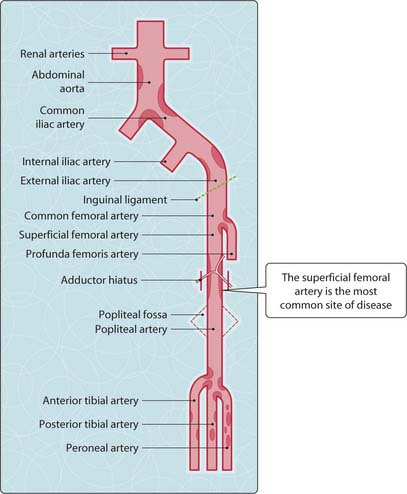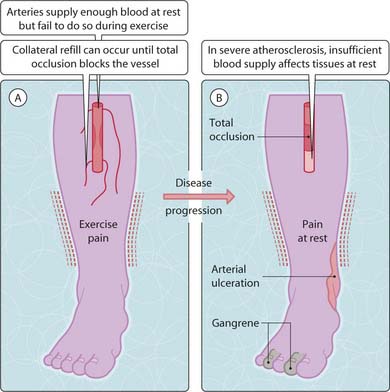23 Peripheral vascular disease
Peripheral vascular disease (PVD) occurs when there is narrowing of the arteries. It is almost always caused by atherosclerosis but may occur secondary to thromboembolism or inflammation (Fig. 3.23.1). Overall mortality after a diagnosis of PVD is 30% at 5 years and 70% after 15 years. Coronary heart disease is the major cause of death in people with PVD of the legs.
Clinical features
Pain is the most prominent feature: claudication, rest pain, night pain, abdominal and back pain.
Intermittent claudication
Intermittent claudication (Fig. 3.23.2) is a cramp-like pain that occurs in a group of muscles upon exercise and is relieved by rest. The superficial femoral artery is most commonly affected where it passes through the adductor hiatus to become the popliteal artery. Stenosis or occlusion at this level may manifest as calf claudication. The absolute claudication distance is the distance of walking before the pain starts. Symptoms are stable in most patients for 5 to 10 years but are progressive in 15% and result in critical limb ischaemia.
< div class='tao-gold-member'>
Stay updated, free articles. Join our Telegram channel

Full access? Get Clinical Tree















